One of our most favourite stopovers, the Shiant Islands, are a small group of islands in the Outer Hebrides, 4 miles or so off the coast of Lewis and 12 miles from the northern tip of Skye, which lies almost due south of them. They are a specially protected area and without doubt, one of the marvels of the Hebrides. Find out availability on our Skye, Small Isles and Shiants Cruise> The Shiants are also a popular destination for our Private Charters.
The Shiant Islands are one of the great bird places of the world, with so many birds that counting them is nearly impossible. According to the best estimates of modern ornithologists, there are between 15,000 and 18,000 guillemots, 8,000 to 11,000 razorbills, between 4,000 and 6,000 fulmars, 2,000 kittiwakes, roughly 1'500 shags, a few hundred gulls of various kinds (whose numbers are rising), 26 great skuas, also on the increase, and 240,000 puffins, about 1 in 8 of the British total and 2 per cent of all the puffins in the world. In July 2009 Europe’s oldest puffin, aged 34, was discovered on the Shiant Islands, beating the previous record holder, an Icelandic bird, by 1 year. An ancient 32-year-old puffin was also found which had, unbelievably, originally been ringed on the same island in 1977.On our cruises we have also seen white-tailed eagles here.
We anchor overnight in the ‘Horse Shoe harbour’ which provides excellent shelter. Watching the birds flying in on late summer evenings is an unforgettable sight. We cruise around the sea cliffs, to view the birdlife and to soak in a great sense of wilderness.
The main islands are Garbh Eilean (rough island) and Eilean an Taighe (house island), which are joined by a narrow isthmus, and Eilean Mhuire (island of the Virgin Mary) to the east. Eilean an Taighe was called Eilean na Cille (island of the church) prior to the 19th century. The seacliffs on the North side of Garbh Eilean are similar to St.Kilda and the Islands are often described as a “mini St.Kilda”.
The Shiant Isles are now uninhabited but an ongoing archaeological research project has uncovered ceramic remains dating from the late bronze age through to the mid 20th century, including Pictish and Viking artefacts. The Islands were given to Adam Nicolson on his 21st birthday and his book “Sea Room” tells the story of these islands and his emotional attachment to them which is well worth reading.

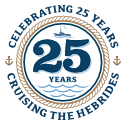
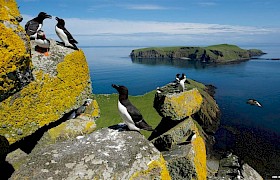
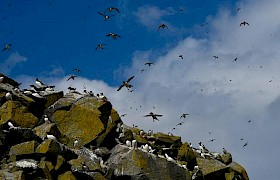
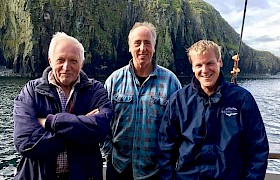
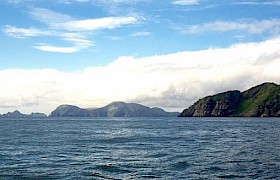
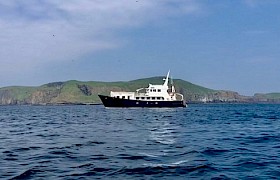
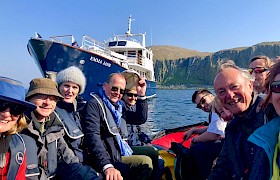
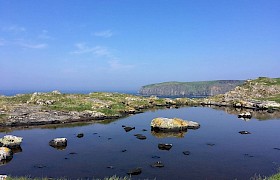
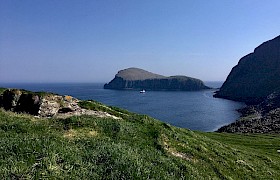
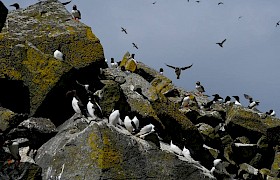
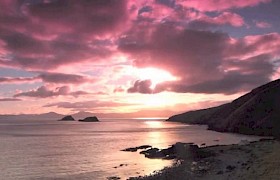
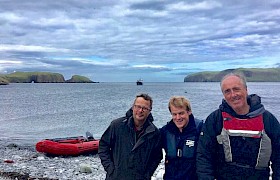
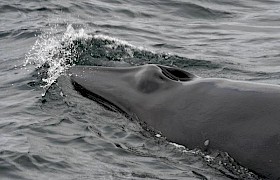
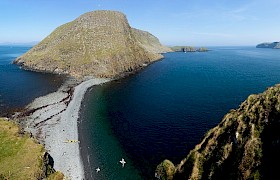
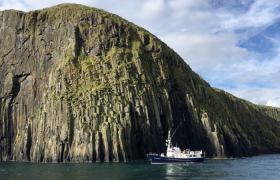
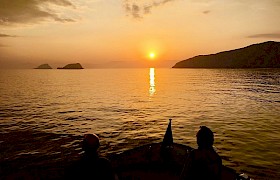
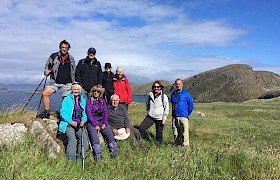
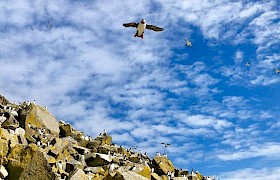
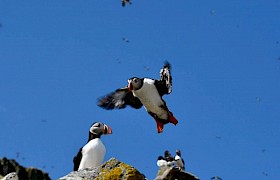



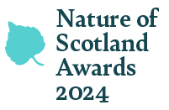













This was our second cruise on the Lucy Mary, so we had high expectations from last time, which were all fulfilled. Abbie was once again our steward, while skipper Lewis, Chef Jeya and Wildlife Guide Linsey were new to us. Our weather was exceptional, with Lewis keeping us well away from any bad stuff. We also achieved our top bucket list item of dolphin bow wave riding, with around 20 dolphins swimming with us on one day and then around 6 on a later day - stupendous. Our fellow travellers were all lovely people, which is such an important factor in these small cruise ships, and it was a nice touch for Lewis and Linsey to join us for our evening meals. Jeya’s food was consistently superb, and Abbie made sure we were always well looked after. Always impressive was the ability of the crew to turn their hand to pretty much any task, which meant that occasional glitches were dealt with smoothly and without fuss. Lynsey in particular was visibly always on the go, cleaning the decks while we breakfasted, guiding us on board and onshore, and helping brief and debrief us at the end of each day. Having such an experienced wildlife guide at your elbow at all times is what really differentiates this cruise from the competition. The whole experience felt like we were very much involved in agreeing or amending the itinerary for the following day, rather than simply being a passenger. We are already booked for a 10 day cruise next year.
John and Aileen MacLean: 13 May 2024Skye, the Small Isles and the Shiants